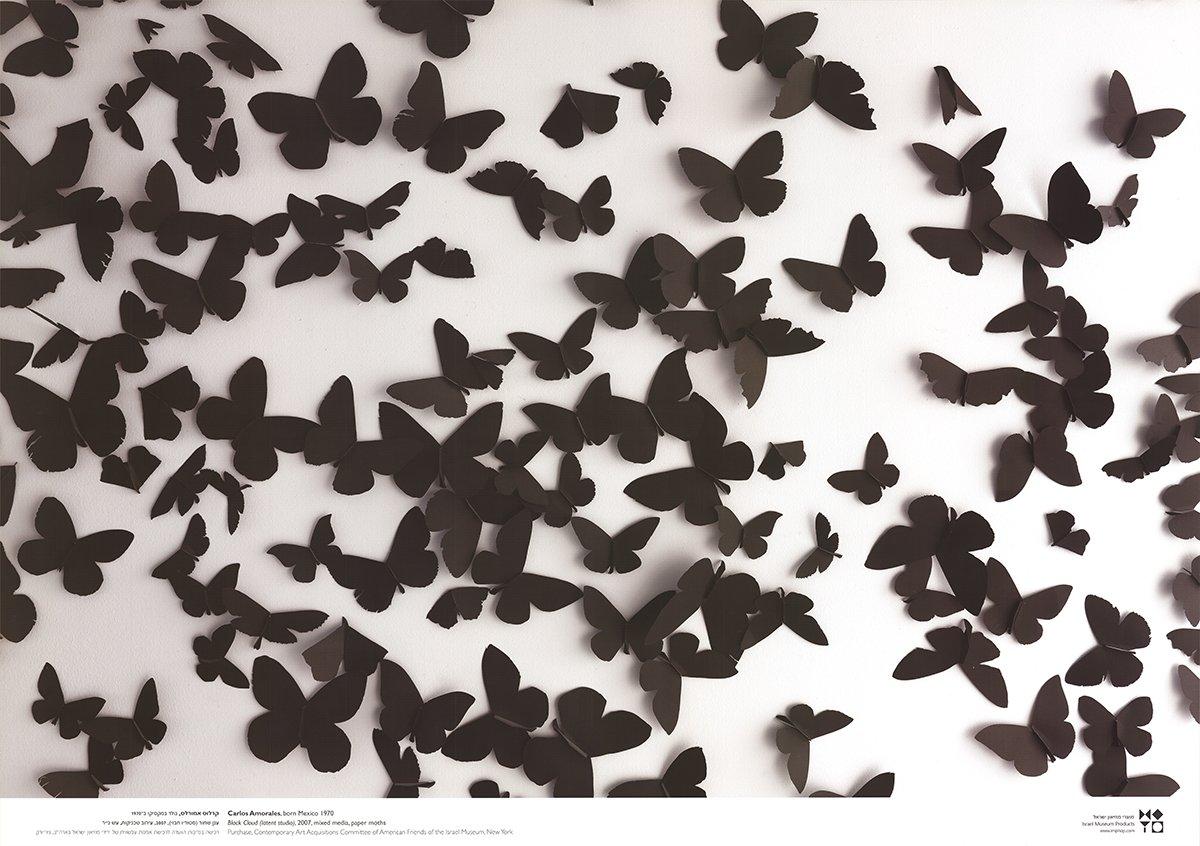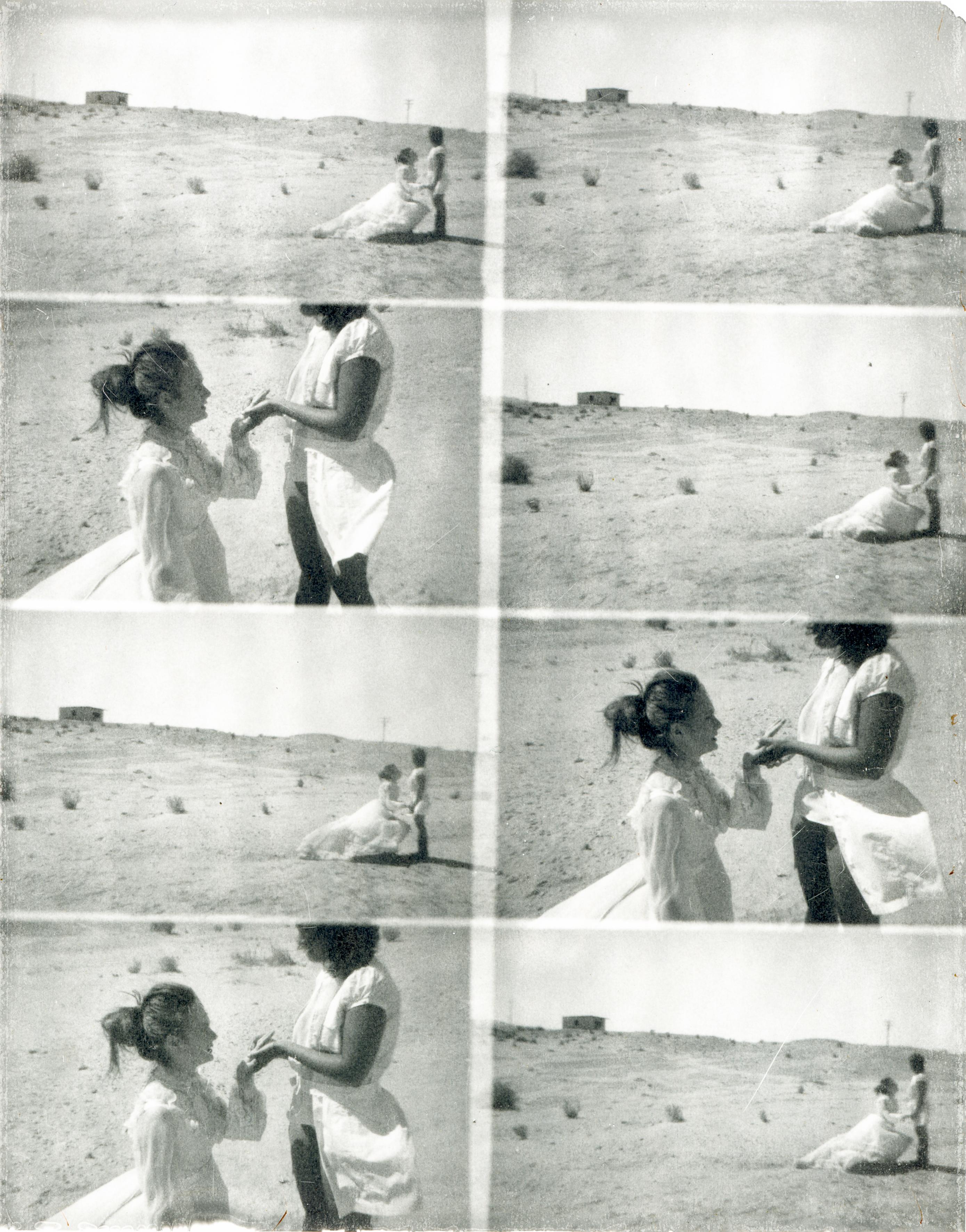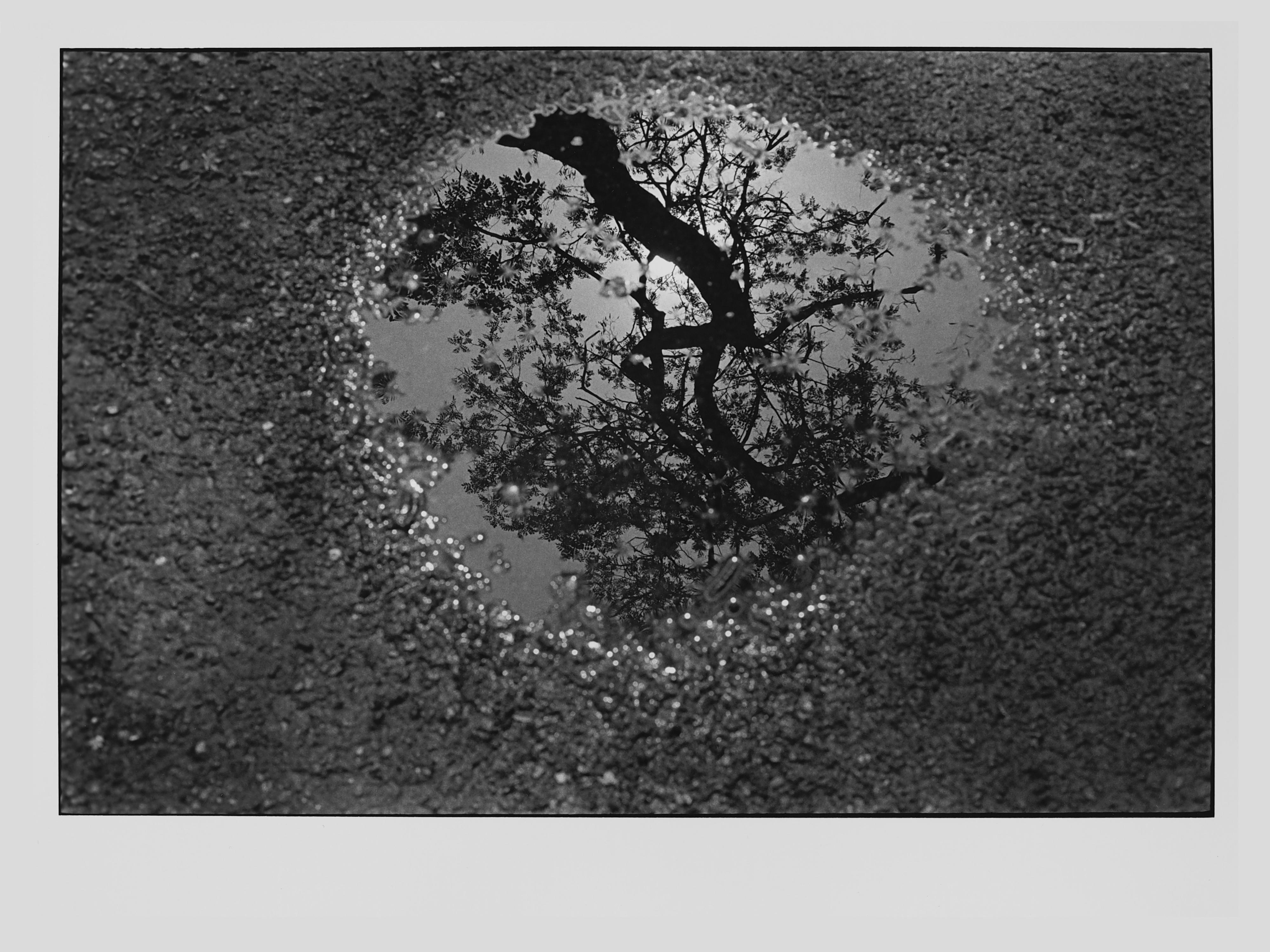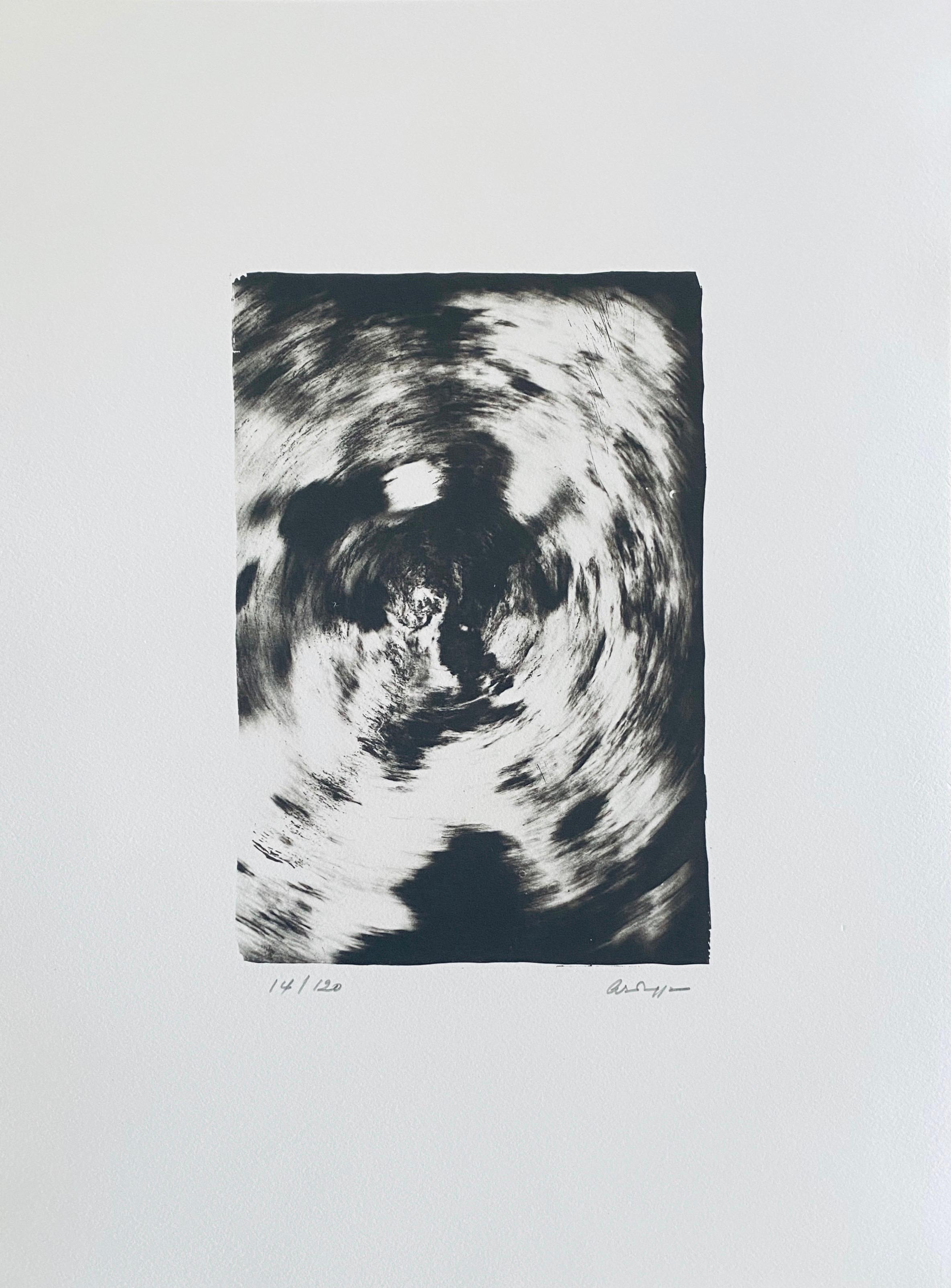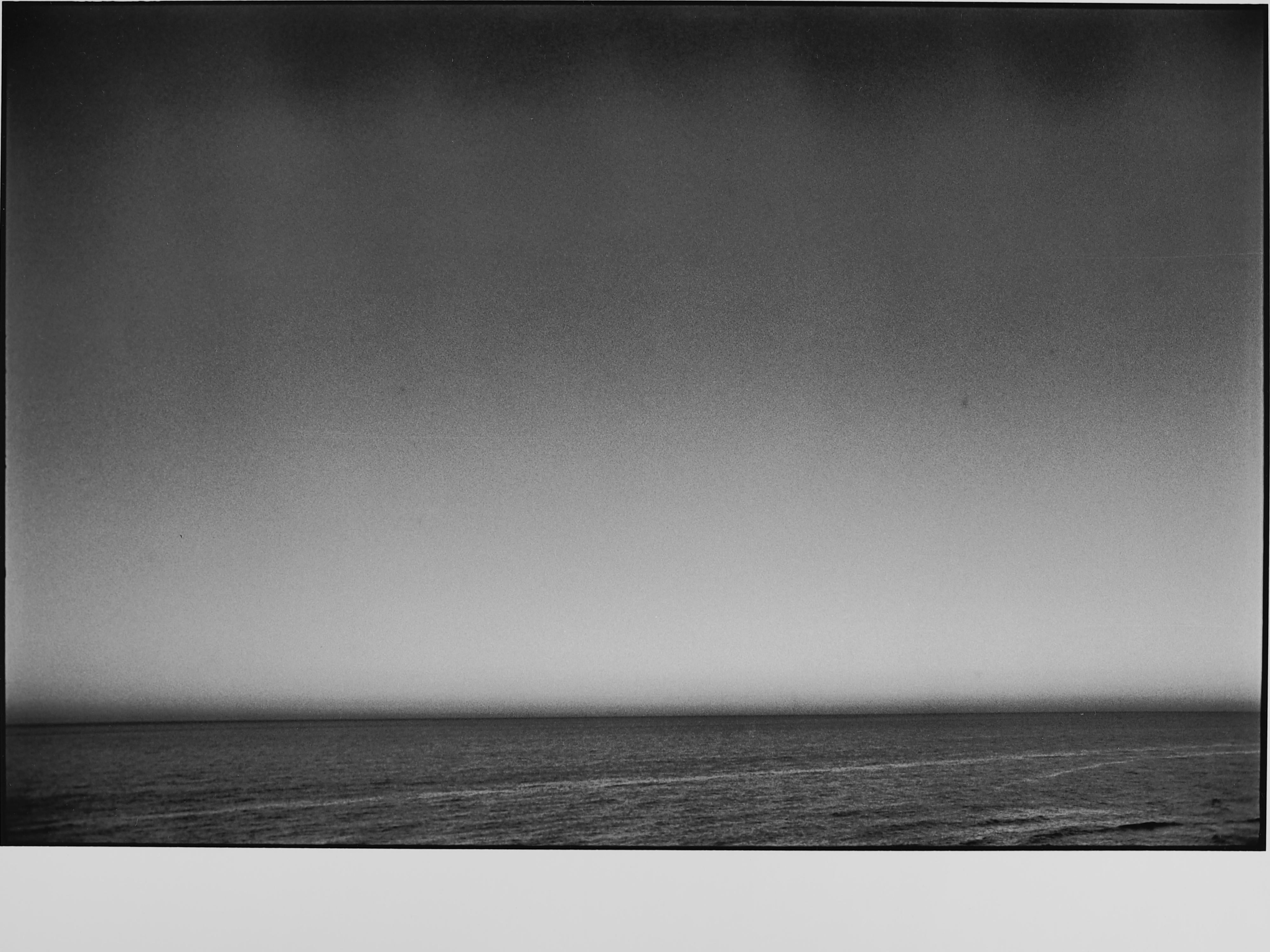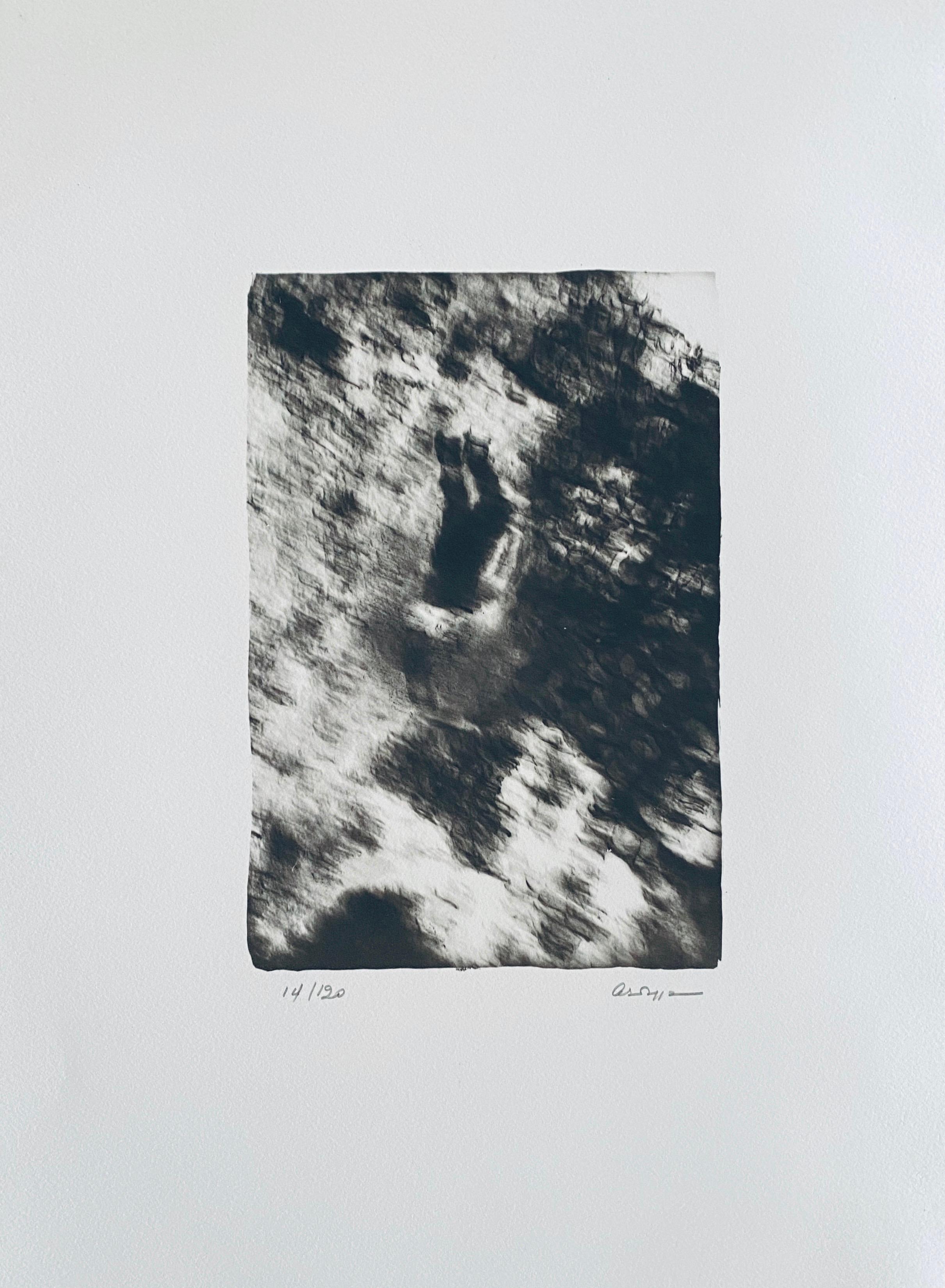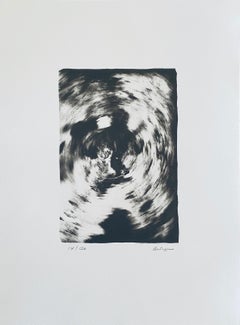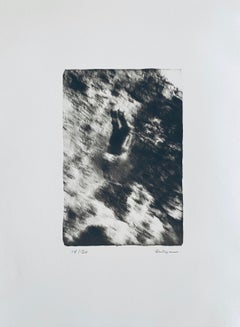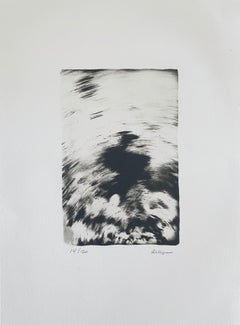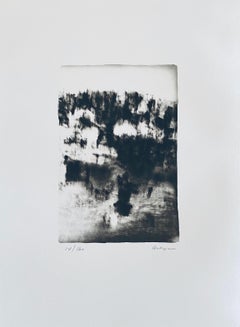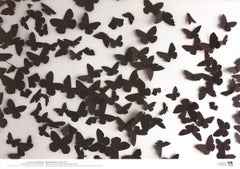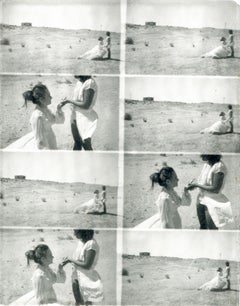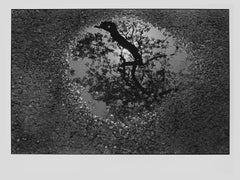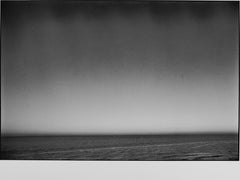Items Similar to Large Michal Rovner Photograph, Photo Print on Paper Israeli Master
Want more images or videos?
Request additional images or videos from the seller
1 of 10
Michal RovnerLarge Michal Rovner Photograph, Photo Print on Paper Israeli Master2002
2002
$6,000
£4,531.82
€5,237.48
CA$8,415.92
A$9,360.66
CHF 4,899.17
MX$114,169.21
NOK 61,559.86
SEK 57,904.99
DKK 39,092.72
About the Item
Hand signed, numbered and dated. the edition is marked PP 1/3 and dated 2002.
This is a Photograph printed on a rag type paper with text in body.
I believe this piece relates to the Israeli Palestinian relationship.
Michal Rovner (born 1957) is an Israeli video, photo and cinema artist.
Michal Rovner was born in Tel Aviv, Israel. She studied cinema, television, and philosophy at Tel Aviv University and subsequently at the Bezalel Academy of Arts and Design in Jerusalem in 1981, receiving a BFA in photography and art in 1985. In 1978, with artist Arie Hammer, she co-founded the Camera Obscura School of Art in Tel Aviv, the city’s first school for photographers. She moved to New York in 1987.
Work
In her early photography series Outside (1990–91), Rovner photographed a Bedouin Arab encampment in the desert and reprinted it, distorting its size and color. For the Decoy series (1991), she distorted radar and surveillance images to create photographs of indistinct groups of people with blurred features. In One-Person Game Against Nature (1992–93), she again distorted images, this time her own photographs of people floating in the Dead Sea.
In 1996, Rovner began to use film and video, creating works featuring anonymous crowds of people or animals, as in Monoprints of Birds (1998). While she has eschewed direct political commentary in her work, in 1995–96 she produced installations for the Israel-Lebanon border that were situated on electric fences and guard towers in the line of ongoing exchanges of fire. These were complemented by her video Border (1996–97), in which she futilely attempted to demarcate and cross the border from Israel into Lebanon.
Her video Notes (2001) was a collaboration with the composer Philip Glass; Rovner used footage of a group of people walking on an inclined angle, and Glass composed music inspired by this moving image (their collaboration was documented in the 2003 documentary Looking Glass). Time Left (2002), a multichannel-video installation comprising images of endless rows of indistinct beings, was the centerpiece of her mid-career retrospective at the Whitney Museum of American Art in New York in 2002. For the exhibition In Stone, at Pace Wildenstein in New York in 2004, she mixed sculpture and video by projecting minute images of crowds onto tablets of stone, blurring the line between image and text.
In the film Fields of Fire (2005), Rovner’s images of oilfields in the Republic of Kazakhstan reflect the persistent instability of a region at the epicenter of international scrutiny. Living Landscape (2005), a site-specific video wall at Yad Vashem in Jerusalem, projects a montage of pre-WWII footage of dances, music, and daily lives of European Jews.
In the early 1990s, she worked with director Robert Frank on two films, One Hour-C’est Vrai (1990), an experimental film for French television, and Last Supper (1992), which she co-wrote.
Rovner represented Israel in the 50th Venice Biennale and turned the Israeli pavilion into one of the most interesting one that year. "....Rovner's media art is like no other. She stands alone in the pure and artful way she bends digital technology to suit her own vision. She makes of these tools fine materials like the smoothest of marble or the supplest of paints..."
Her installation in the Louvre in 2011 was called "Histories". The Louvre chose Rovner for its Summer season outdoor display, next to the famous entrance Pyramid. Rovner's idea was to explore the themes of physical and psychological borders and of identity. In winter 2012 Rovner presented "Topography" show in Pace Gallery, New York, continuing environment and science theme.
Exhibitions
Rovner has had numerous solo exhibitions since her first, at Dizengoff Center in Tel Aviv in 1987, including shows at the Prague House of Photography (1992), the Art Institute of Chicago (1993), the Whitney Museum of Art in New York (2002), Museo d’Arte Contemporanea in Rome (2003), and Jeu de Paume in Paris (2005). She has also exhibited widely in group exhibitions, such as the Photography Biennial in Ein Harod, Israel (1986), New Photography 10 at the Museum of Modern Art in New York (1994), Photographic Condition at the San Francisco Museum of Modern Art (1995), Stedelijk Museum in Amsterdam (1999), Whitney Biennial (2000), Biennial Exhibition at the Corcoran Gallery of Art in Washington, D.C. (2000), Venice Biennale (2003), Shanghai Biennale (2004) and the Auckland Triennial (2007)
The Space Between, Whitney Museum of American Art, New York, July 11–October 13,
Michal Rovner, Shoshana Wayne Gallery, Santa Monica California, March 31–April 28, 2001.
Recall Seeing, Studio Stefania Miscetti, Rome, 1998.
Photographic Works, Pace / MacGill Gallery, New York, October 30–November 29, 1997.
Michal Rovner: Art Now 10, Tate Gallery, London, May 26–August 3, 1997.
Michal Rovner, Peter Kilchmann Gallery, Zurich, June–July 1993.
Michal Rovner, Prague House of Photography, 1992.
Decoy: Michal Rovner, Grant Gallery, Denver, 1991. Traveled to: The Friends of Photography, Ansel Adams Center, San Francisco, as Decoy: Michal Rovner, Photographs of the Gulf War,
Outside: Michal Rovner, Works 1987–1990, Tel Aviv Museum of Art, Israel,
Awards and recognition
In 1997, Rovner received the Tel Aviv Museum Award and in 2008 she received an honorary doctorate from the Hebrew University of Jerusalem. She lives and works in New York and Israel, where she has a farm in the Valley of Ayalon, between Tel Aviv and Jerusalem.
Quotes
"My work is not directly related to the Israeli-Palestinian question. I present situations of conflict, tensions, fractures.. vulnerability. (...) I always begin with reality. I record it and subsequently, little by little, I extract the image of reality, which becomes more fuzzy, losing its own definition, and bringing therefore something else."
She has exhibited with Micha Ullman, Igael Tumarkin, Dani Karavan, Moshe Gershuni, Sigalit Landau, Besir Abu Rabia, David Tartakover and David Reeb.
Her works have appeared in collections around the world such as the Art Institute of Chicago, the Corcoran Gallery of Art, Washington D.C., the Israel Museum, Jerusalem, the Metropolitan Museum of Art, New York, the Museum of Contemporary Art, Chicago, and the Tel Aviv Museum of Art.
She works in digital photo prints probably based off of silver gelatin prints.
Published works
Michal Rovner, Fields, Steidl, Londres, 2005
- Creator:Michal Rovner (1957, Israeli)
- Creation Year:2002
- Dimensions:Height: 28 in (71.12 cm)Width: 33.5 in (85.09 cm)
- Medium:
- Period:
- Condition:
- Gallery Location:Surfside, FL
- Reference Number:1stDibs: LU38213259792
About the Seller
4.9
Platinum Seller
Premium sellers with a 4.7+ rating and 24-hour response times
Established in 1995
1stDibs seller since 2014
1,799 sales on 1stDibs
Typical response time: <1 hour
- ShippingRetrieving quote...Shipping from: Surfside, FL
- Return Policy
Authenticity Guarantee
In the unlikely event there’s an issue with an item’s authenticity, contact us within 1 year for a full refund. DetailsMoney-Back Guarantee
If your item is not as described, is damaged in transit, or does not arrive, contact us within 7 days for a full refund. Details24-Hour Cancellation
You have a 24-hour grace period in which to reconsider your purchase, with no questions asked.Vetted Professional Sellers
Our world-class sellers must adhere to strict standards for service and quality, maintaining the integrity of our listings.Price-Match Guarantee
If you find that a seller listed the same item for a lower price elsewhere, we’ll match it.Trusted Global Delivery
Our best-in-class carrier network provides specialized shipping options worldwide, including custom delivery.More From This Seller
View AllFrench Contemporary Collotype Photograph Black White Photo Andre Naggar
By Andre Naggar
Located in Surfside, FL
Photos pictured of information cards after the images of the black and white photos are not included.
La Chute D'Icare (The Fall of Icarus) is a original, black and white photograp...
Category
1990s Contemporary Black and White Photography
Materials
Photogravure
French Contemporary Collotype Photograph Black White Photo Andre Naggar
By Andre Naggar
Located in Surfside, FL
Photos pictured of information cards after the images of the black and white photos are not included.
La Chute D'Icare (The Fall of Icarus) is a original, black and white photograp...
Category
1990s Contemporary Black and White Photography
Materials
Photogravure
French Contemporary Collotype Photograph Black White Photo Andre Naggar
By Andre Naggar
Located in Surfside, FL
Photos pictured of information cards after the images of the black and white photos are not included.
La Chute D'Icare (The Fall of Icarus) is a original, black and white photograp...
Category
1990s Contemporary Black and White Photography
Materials
Photogravure
French Contemporary Collotype Photograph Black White Photo Andre Naggar
By Andre Naggar
Located in Surfside, FL
Photos pictured of information cards after the images of the black and white photos are not included.
La Chute D'Icare (The Fall of Icarus) is a original, black and white photograp...
Category
1990s Contemporary Black and White Photography
Materials
Photogravure
French Contemporary Collotype Photograph Black White Photo Andre Naggar
By Andre Naggar
Located in Surfside, FL
Photos pictured of information cards after the images of the black and white photos are not included.
La Chute D'Icare (The Fall of Icarus) is a original, black and white photograp...
Category
1990s Contemporary Black and White Photography
Materials
Photogravure
French Contemporary Collotype Photograph Black White Photo Andre Naggar
By Andre Naggar
Located in Surfside, FL
Photos pictured of information cards after the images of the black and white photos are not included.
La Chute D'Icare (The Fall of Icarus) is a original, black and white photograp...
Category
1990s Contemporary Black and White Photography
Materials
Photogravure
You May Also Like
1998 After Carlos Amorales 'Black Cloud' Contemporary Black & White Israel
By Carlos Amorales
Located in Brooklyn, NY
Paper Size: 27 x 38 inches ( 68.58 x 96.52 cm )
Image Size: 25 x 38 inches ( 63.5 x 96.52 cm )
Framed: No
Condition: A: Mint
Additional Details: High quality, elegant capture ...
Category
1990s Prints and Multiples
Materials
Offset
$100 Sale Price
20% Off
Till Death Do Us Part - analog hand print, 160x125cm
By Stefanie Schneider
Located in Morongo Valley, CA
Till Death do us Part (Till Death Do Us Part) - 2007
Edition of 5,
160x125cm.
Analog C-Print, hand-printed by the artist on Fuji Crystal Archive Paper, based on the Polaroid.
Sig...
Category
Early 2000s Contemporary Black and White Photography
Materials
Video, Archival Paper, Photographic Paper, C Print, Color, Polaroid
$4,900 Sale Price
30% Off
Untitled (0412-19), Photographic Print on Silver Gelatin, 2011
By Koyo Tamaki
Located in Boston, MA
Artist Commentary:
Yet another puddle in the city; I could have easily passed by. However, this time I saw some light inside the puddle. Although it is quite a minimal shot of asphalt, water, tree and light...
Category
21st Century and Contemporary Abstract Photography
Materials
Silver Gelatin
Untitled (0708-15), Photographic Print on Silver Gelatin, 2012
By Koyo Tamaki
Located in Boston, MA
Artist Commentary:
This is the second print in an edition of five and the approximate image size is 12"W x 8"H.
Keywords: black and white, sea, print, sky, mist, dew, travel, horizo...
Category
21st Century and Contemporary Landscape Photography
Materials
Silver Gelatin
Untitled 20247 - lith silver gelatin print
By John Casado
Located in Burlingame, CA
John Casado - Untitled 20247, figurative black and white masked female nude.
2001 - Unique lith silver gelatin photographic print.
image = 22 1/2 x 18 3/8 or 57 x 46.7 centimeters ...
Category
21st Century and Contemporary Contemporary Nude Photography
Materials
Silver Gelatin
Photographs 1960–2024. Book & signed Gelatin silver print ‘Untitled, Elba, 1980'
By Ralph Gibson
Located in Los Angeles, CA
Limited Art Edition (No. 1–100), with the gelatin silver print Untitled (Elba, 1980), numbered and signed by Ralph Gibson.
Edition of 100.
Gelatin silver print, 11 x 14 in., in portf...
Category
Late 20th Century Abstract Abstract Photography
Materials
Silver Gelatin
More Ways To Browse
3d Black Wall Art
White Paper Wall Sculpture
Outdoor White Sculpture
Silver Gelatin Photo Chicago
Lebanon Prints
Jerusalem Stone
Used Fire Guard
Jeu De Paume
Black White Sculpture Outdoor
David Winter Sculptures
Bedouin Art
French Bird Wall Sculpture
Bezalel Silver
Outdoor Glass Sculpture
Arab Silver
Last Supper Print
Outdoor Marble Sculpture
Monica Adams
